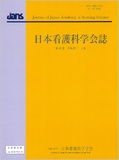Japanese
English
- 販売していません
- Abstract 文献概要
- 参考文献 Reference
要旨
目的:文献検討を通して,高齢者ケアで活用しているセンサーとIoT機器の使用上の詳細を明らかにする.
方法:医中誌Web,CiNii,MEDLINE,CINAHL,CNKIを用いて2021年までに発表された文献を検索し,既に開発されたセンサーとIoT機器の高齢者ケアでの使用目的,使用上のポジティブな面とネガティブな面等の内容を抽出した.使用目的によって,機器を分類した.
結果:26本の文献を採用した.機器は,身体活動量の算出・評価をする,離床や転倒・転落を予防する,安全を見守る,作業位置と場所移動を推定する,睡眠状態を評価する,24時間のバイタルサインをモニタリングする,おむつの使用による不快感を軽減する,尿の膀胱貯留量を把握する,笑いを検出しコミュニケーションを円滑化する,施設の生活環境をモニタリングする,ケア業務を改善・強化するものの11種類に分類した.
結論:文献検討で抽出した機器の使用上の詳細は今後高齢者ケア施設で広範囲に機器を導入する際の参考になる.
Objective: To investigate the use of sensors and Internet of things (IoT) devices in older adult care via literature review.
Methods: We researched the literature published until 2021 based on Ichu-shi Web, CiNii, MEDLINE, CINAHL, and CNKI. Accordingly, we extracted the data pertaining to the purpose, positive, and negative aspects of the use of developed sensors and IoT devices in older adult care. The sensors and IoT devices were classified according to the intended use described in the adopted literature.
Results: 26 studies were adopted. Sensors and IoT devices were classified into the following 11 types according to the intended use or purpose: for calculating and evaluating the amount of physical activity, preventing getting off the bed and falling, ensuring safety, estimating work position and location change, evaluating sleep state, 24-h vital sign monitoring, reducing the discomfort caused owing to wearing diapers, quantifying the amount of urine retained in the bladder, detecting laughter and facilitating communication, monitoring the facility living environment, and improving and reinforcing care services.
Conclusion: The details of the sensor and IoT device use extracted through the literature review will serve as a reference when widely introducing the devices in long-term care facilities in the future.
Copyright © 2023, Japan Academy of Nursing Science. All rights reserved.


